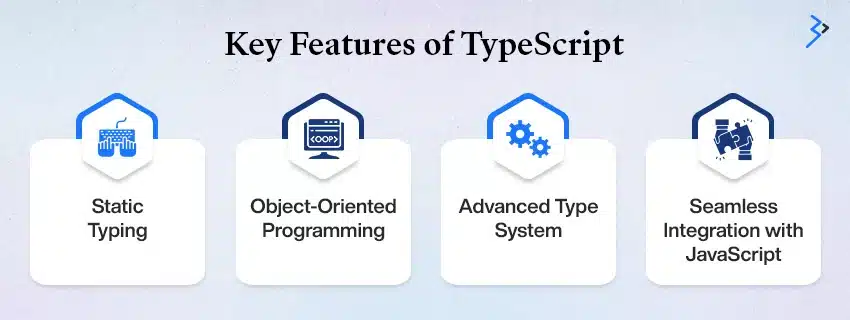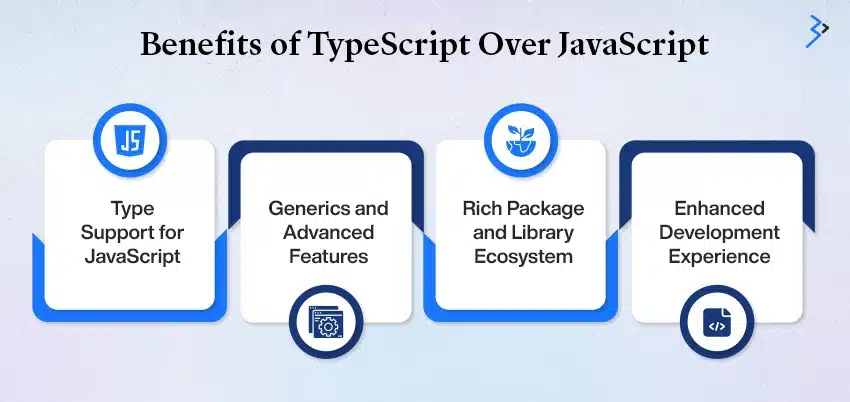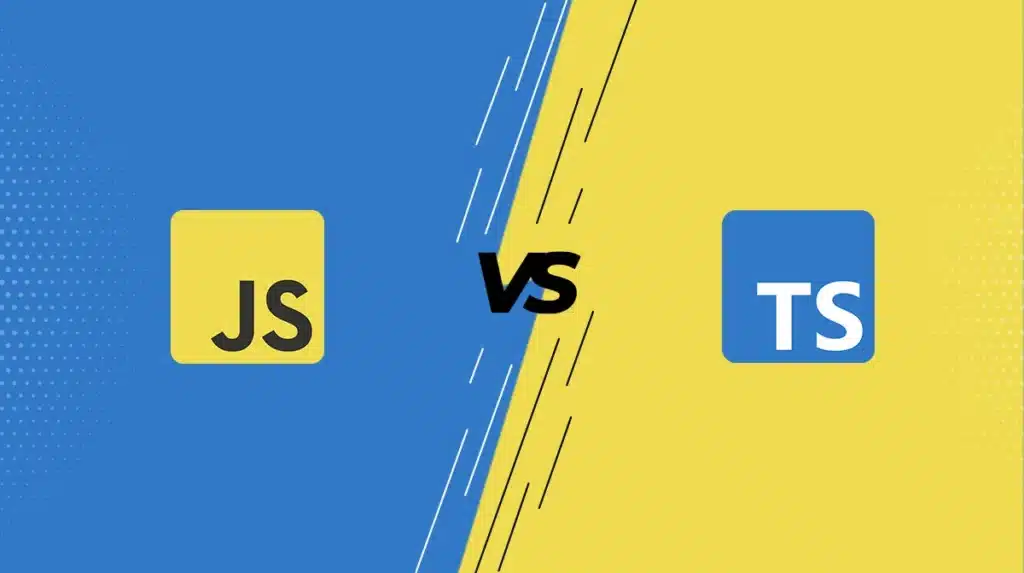Choosing the correct programming language is pivotal in shaping the success of any web development project. Amidst the many options available, the debate between TypeScript and JavaScript continues to dominate conversations within the developer community. Each has unique advantages and limitations, but the question remains: which language is perfect for your next big project?
This blog will explore the key differences, benefits, and use cases of these two powerful languages. Whether you are planning to build an interactive web application or a scalable enterprise solution, this comprehensive guide will help you make an informed decision. We’ll also explore how innovative tools like DhiWise React Builder support JavaScript and TypeScript, making web app development more accessible.
So, if you need help deciding between TypeScript and JavaScript, stay tuned as we dissect their features, advantages, and when to use each. Let’s get started!
Before we discuss their differences in detail, let’s first understand what JavaScript and TypeScript offer.
What is JavaScript?
JavaScript (JS) is a versatile, cross-platform programming language that has become a cornerstone of modern web development. It’s widely known for its ability to create dynamic and interactive elements on websites, such as live chat windows, responsive search boxes, and animated graphics.
Moreover, advancements like Node js development and the Google V8 engine have expanded JavaScript’s capabilities to server-side programming, making it a full-stack development tool.
Key Features of JavaScript

- Dynamic Typing
JavaScript employs dynamic typing, meaning variables are not bound to a specific data type. This allows developers to assign and reassign variables with different types without declaring them explicitly. This feature accelerates development by simplifying variable declaration and usage. However, it can also lead to runtime errors due to type-related issues, making debugging a critical skill for JavaScript developers.
- Prototype-Based Inheritance
JavaScript’s inheritance model is prototype-based, offering an alternative to the classical inheritance system in languages like Java or C++. In this approach, objects can inherit properties and methods directly from other objects via prototypes. This makes JavaScript more flexible and suited for creating complex object hierarchies. Developers can dynamically extend object behavior during runtime, making it a preferred choice for dynamic applications.
- Asynchronous Programming
JavaScript is designed to handle asynchronous operations efficiently, a key requirement for modern web development. Through features like callbacks, promises, and async/await, JavaScript enables non-blocking execution. This means tasks such as fetching data from an API or reading files can occur without halting the execution of other code. Asynchronous programming is vital for creating seamless, responsive applications.

- First-Class Functions
In JavaScript, functions are treated as first-class citizens. This means functions can be:
- Assigned to variables
- Passed as arguments to other functions
- Returned as values from other functions
This flexibility underpins powerful programming paradigms like functional programming and facilitates the creation of higher-order functions, event handlers, and callback mechanisms. These capabilities make JavaScript versatile for a wide range of programming challenges.
Read More: Angular Vs Vue: The Best Javascript Framework
Advantages of JavaScript
- Cross-Platform Compatibility
One of JavaScript’s greatest strengths is its ability to run seamlessly on virtually any web browser. This universal compatibility allows developers to create applications that function consistently across various devices and operating systems without additional plugins or software, making JavaScript an essential tool for web development in a diverse, device-driven world.
- Rich Ecosystem
JavaScript boasts a vibrant and expansive ecosystem of frameworks and libraries, such as React, Angular js developer, and Vue.js, which empowers developers to create sophisticated, feature-rich web applications. These tools streamline the development process, provide reusable components, and support scalable architectures, making JavaScript a go-to language for modern web solutions. Additionally, the active community ensures continuous updates and support for these frameworks.
- Ease of Learning
With its straightforward syntax and human-readable code, JavaScript is an accessible language for beginners entering the programming world. Its widespread use and relevance in web development mean countless learning resources, tutorials, and forums are available, making the learning journey smooth and encouraging for aspiring developers.
What is TypeScript?
TypeScript is a powerful superset of JavaScript developed by Microsoft. It is designed to enhance JavaScript by addressing its inherent limitations. It introduces advanced features, including static typing, object-oriented programming (OOP) support, and a more sophisticated type system. These additions help developers create more structured, predictable, and maintainable code.
TypeScript code is compiled into standard JavaScript, ensuring compatibility with any environment where JavaScript runs. Its ability to balance modern features and backward compatibility has made it a preferred choice for many developers working on large-scale projects.
Key Features of TypeScript

- Static Typing
TypeScript brings the power of static typing to JavaScript. Developers must define types for variables, functions, and objects, which ensures type correctness during development. This minimizes runtime errors and enhances the reliability of the codebase, making it particularly valuable for large or complex applications.
- Object-Oriented Programming (OOP) Paradigms
TypeScript integrates OOP concepts such as inheritance, polymorphism, and encapsulation, offering a more structured approach to coding. This makes TypeScript a robust choice for developing enterprise-level applications, where OOP principles facilitate better organization, scalability, and code reuse.
- Advanced Type System
TypeScript provides an enriched type system with support for enums, generics, tuples, and union types, enabling developers to write more expressive and flexible code. These features enhance type safety, improve code readability, and efficiently support complex data structures.
- Seamless Integration with JavaScript
TypeScript is fully compatible with JavaScript, allowing developers to migrate existing JavaScript projects to TypeScript gradually. This backward compatibility makes it easy to adopt TypeScript incrementally without disrupting existing workflows or codebases.
Advantages of TypeScript
- Improved Code Maintainability
The combination of static typing and OOP principles in TypeScript ensures better organization and readability of code, making it easier to manage and scale large codebases. This also promotes consistent coding practices, which is crucial for team projects.
- Error Prevention
TypeScript’s type-checking mechanism catches many potential errors during compilation well before executing the code. This proactive error detection significantly reduces runtime issues and leads to more robust applications.
- Enhanced Tooling
TypeScript integrates seamlessly with modern Integrated Development Environments (IDEs), offering advanced features such as intelligent code completion, real-time error highlighting, and automated refactoring. These tools improve developer productivity, reduce debugging time, and make coding more efficient.
By combining JavaScript’s flexibility with TypeScript’s enhanced features, developers can enjoy the best of both worlds: the dynamic nature of JavaScript and the structure and safety of a statically typed language.
Key Features: A Comparative Analysis
JavaScript and TypeScript are both exceptional web development tools but differ in their core philosophies and functionalities. Let’s explore these differences to understand which language is better suited for various project requirements.
- Type System
- JavaScript: Dynamically typed, allowing flexibility but prone to errors during runtime.
- TypeScript: Statically typed, ensuring type-related errors are caught early during development.
- Learning Curve
- JavaScript: Beginner-friendly with simple syntax and minimal requirements for initial setup.
- TypeScript: There is a steep learning curve due to the need to understand static typing and OOP concepts.
- Performance
- Both JavaScript and TypeScript rely on JavaScript engines like V8 for execution, so performance differences are negligible.
- Error Handling
- JavaScript: Detects errors only during runtime, which can be challenging to debug in large projects.
- TypeScript: Errors are identified during compilation, resulting in cleaner and more reliable code.
Applications and Popularity
JavaScript has been the go-to language for web developers for decades, powering approximately 99% of all websites. Its vast community, rich library ecosystem, and versatile frameworks make it a preferred choice for interactive web development.
On the other hand, TypeScript is rapidly gaining popularity, particularly for enterprise applications and large-scale projects. Its adoption by tech giants like Google, Microsoft, and Slack underscores its capability to deliver robust and scalable solutions.
Benefits of TypeScript Over JavaScript

Advantages of Using TypeScript
- Type Support for JavaScript
TypeScript extends JavaScript with static typing, enabling developers to catch errors early in development. This reduces runtime errors and improves code reliability, making debugging and testing more efficient.
- Generics and Advanced Features
TypeScript introduces features like generics, annotations, interfaces, type inference, namespaces, and classes. These tools enhance the flexibility and scalability of code, especially for large and complex projects.
- Rich Package and Library Ecosystem
As a superset of JavaScript, TypeScript boasts a rich package ecosystem. Developers familiar with JavaScript can seamlessly adapt to TypeScript while enjoying additional libraries and testing tools that streamline development.
- Enhanced Development Experience
TypeScript integrates well with modern IDEs, offering features like IntelliSense, autocomplete, and refactoring tools. This speeds up development and improves code quality.
Key Advantages Of JavaScript

- Error Detection: TypeScript detects compilation errors during development, reducing runtime issues.
- Static Typing: Specify variables, parameters, and return types to enhance code quality.
- Improved Maintainability: Interfaces, enums, and generics enable better management of large codebases.
- ES6 Compatibility: TypeScript supports ES6 features like arrow functions, let and const, and default parameters.
- Code Structuring: Features like namespaces and modules allow for better code organization.
Why Choose TypeScript?
TypeScript is superior for large-scale projects requiring strong typing and team collaboration. Its compile-time checks, robust toolset, and enhanced maintainability make it ideal for complex applications.
Limitations of TypeScript
Despite its benefits, TypeScript has certain challenges and limitations:
- Additional Setup and Configuration
TypeScript requires a compilation step to convert code into JavaScript. This introduces overhead in setting up and maintaining the build process, especially for small-scale projects.
- Learning Curve
TypeScript’s features and syntax can be challenging for developers unfamiliar with static typing. Teams proficient in JavaScript may take months to become fully productive with TypeScript.
- Compatibility Issues
While TypeScript supports many third-party libraries, some may need more comprehensive type definitions, necessitating additional integration work.
- Slower Development Speed
The need for type definitions and compilation can slow down the development process. Additionally, TypeScript’s abstract class support is limited compared to other statically typed languages.
- Not Suitable for All Projects
Small-scale or less complex projects may not justify the additional overhead of TypeScript, where JavaScript’s simplicity suffices.
While TypeScript offers robust error handling and better maintainability, it is essential to weigh these benefits against the potential drawbacks based on project requirements.
Future Trends and Industry Adoption
Will TypeScript Replace JavaScript?
TypeScript is not designed to replace JavaScript but to enhance it. Here’s why:
- Superset of JavaScript: Any valid JavaScript code is also valid TypeScript code.
- Feature Enhancements: TypeScript adds static typing, interfaces, and advanced tooling to improve code quality.
- Compilation: TypeScript code is transpiled into JavaScript for execution in browsers or Node.js environments.
JavaScript remains the dominant choice for lightweight applications and rapid prototyping. TypeScript excels in large-scale projects requiring robust error checking and maintainability.
Trends Shaping the Future
- Increased Adoption by Major Companies: Organizations like Microsoft, Slack, and Airbnb are adopting TypeScript for scalability and reliability.
- Open-Source Momentum: Many open-source projects are transitioning to TypeScript, leveraging its static typing and enhanced maintainability.
- Evolution of JavaScript Frameworks: Frameworks like React js development, Angular, and Vue.js optimize for TypeScript compatibility.
- WebAssembly Integration: Developers combine TypeScript and WebAssembly for high-performance, browser-based applications.
- Serverless Architecture: TypeScript’s static typing makes it a natural fit for serverless environments, improving scalability and reducing costs.
TypeScript Success Story
Example: Microsoft Teams transitioned from JavaScript to TypeScript, improving code quality, fewer runtime errors, and better developer productivity. Static typing enabled the seamless integration of new features and streamlined maintenance.
JavaScript’s Continued Dominance
Example: A lightweight single-page application (SPA) for rapid prototyping continues to leverage JavaScript. Its simplicity, broad browser compatibility, and lack of a compilation step make it an ideal choice for quick deployments.
Conclusion
Both TypeScript and JavaScript have distinct strengths. While TypeScript offers advanced tooling, static typing, and maintainability for large-scale projects, JavaScript remains the go-to for lightweight applications and rapid development. Choosing between them depends on the project’s complexity, team expertise, and long-term goals. The future of web development lies in leveraging the strengths of both languages to create scalable, efficient, and maintainable applications.
FAQs
- Is TypeScript more complex to learn than JavaScript?
Due to static typing and additional features, TypeScript has a steeper learning curve. However, developers familiar with JavaScript can adapt quickly.
- Can I use both JavaScript and TypeScript in the same project?
Yes, you can. TypeScript allows incremental adoption, enabling teams to use it alongside existing JavaScript code.
- Does TypeScript improve performance?
TypeScript doesn’t enhance runtime performance but improves development efficiency and code reliability, reducing bugs.
- Which is better for front-end vs. back-end development?
TypeScript is well-suited for both, offering type safety and better tooling. JavaScript may be sufficient for quick prototypes or more minor tasks.
- Are there any additional costs or licensing for TypeScript?
TypeScript is open-source and free to use. However, there may be indirect training, setup, and integration costs.
Related Articles
-
The Pros and Cons of Angular Development: All You Need to Know
The significant opportunities in the web development realm attract new technologies and frameworks to fill the gaps in the existing market. It poses a tough competition for the existing frameworks
-
Why AngularJS Is Best Fit For Responsive Web App Development?
Talking About Why AngularJS Is Best Fit For Responsive Web App Development? In order to ease the complex programming structure, web developers switched to the modern jQuery as it is
-
A Comprehensive Guide to React vs React Native
Thanks to the plethora of new-age technologies that support the modern online and app business, developers often need help figuring out which one to use in their next project. Similarly,




